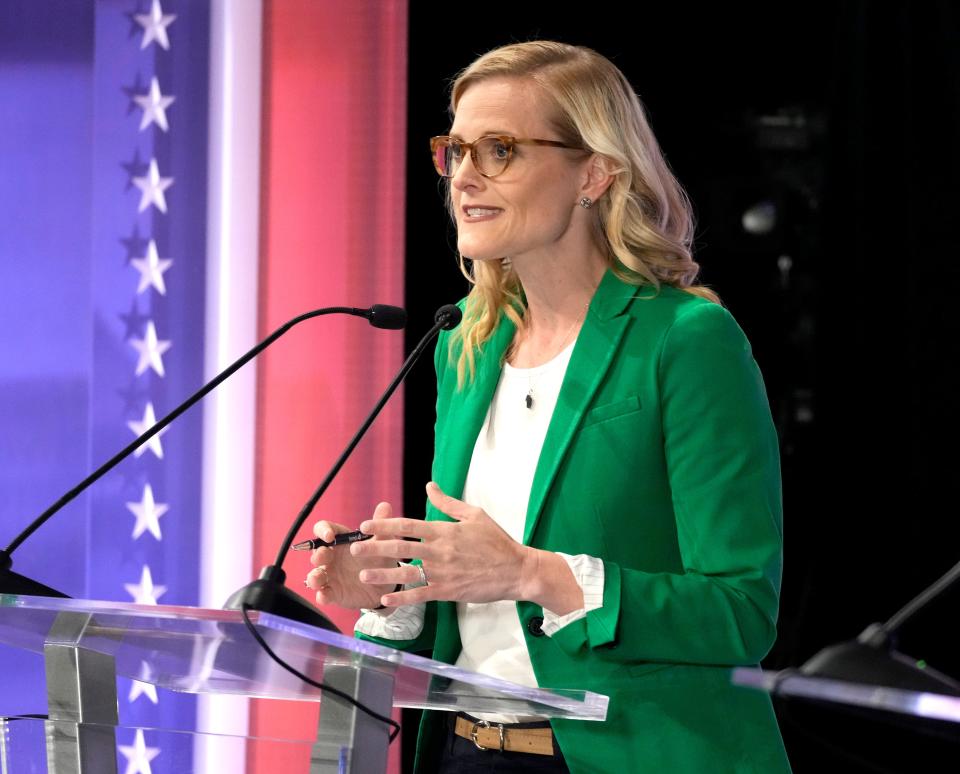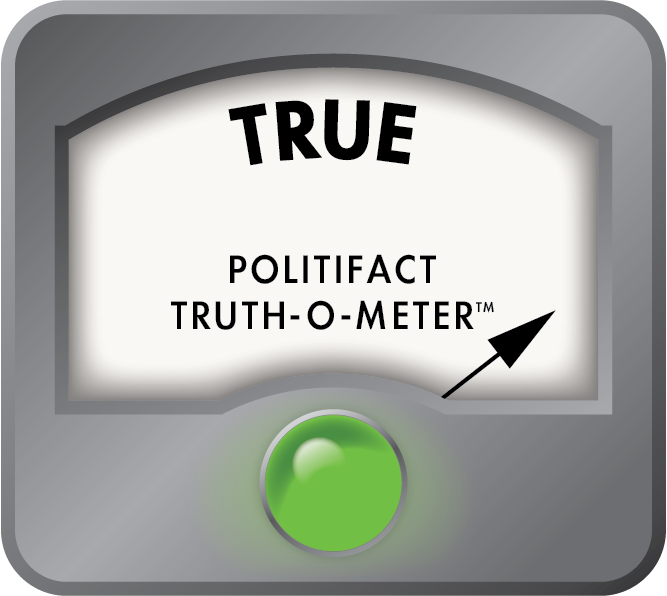Did the 2020 presidential election in Wisconsin really come down to a few votes per ward?

- Oops!Something went wrong.Please try again later.
- Oops!Something went wrong.Please try again later.
At a rally in suburban Waukesha earlier this month, first lady Jill Biden and other Democratic officials laid out what’s at stake in the 2024 election, focusing on abortion and health care access.
Secretary of State Sarah Godlewski was one of the speakers who took the stage before the first lady, asking a crowd of mostly women voters to talk to their neighbors and help get out the vote.
“When it comes to how many votes (President) Joe Biden won, it was literally less than a few votes per ward,” Godlewski said.

We often mention that Biden won Wisconsin in 2020 by a little over 20,000 votes. But taking a look at the votes by ward could give an interesting picture of how competitive the election was – and could be again this fall.
And other Democrats seem to be repeating the same message, including when Biden visited his new campaign headquarters in Milwaukee.
“In Wisconsin, every election comes down to three to four votes per ward,” the state party’s Deputy Organizing Director Jaliah Jefferson said at that event.
As the state heads for a rematch between Biden and former President Donald Trump, let’s take a look at how many votes it came down to by ward last time.
Number came from dividing votes by total number of wards in Wisconsin
When we reached out for backup, Nathan Schwantes, Godlewski’s chief of staff, said the secretary of state was talking about the entire state of Wisconsin, not a specific city or county.
He explained that Biden won the state by 20,682 votes (which is correct) and that Wisconsin had 6,656 wards where voters lived.
That division results in 3.1 votes per ward.
He added that there’s a slightly different count of wards in Wisconsin, which includes wards where no voters actually live. That number was 7,078, giving a result of 2.9 voters.
State law says that wards are the “building blocks” for creating districts for local, state and federal offices. And “all territory, even if unpopulated, must be contained in a ward.”
That explains why some wards might not actually have voters in them.
Schwantes shared an email from the nonpartisan Legislative Technology Services Bureau, which confirms the 7,078 number. That total was from July, because the next count was not taken until January.
Regardless of which total ward number is used, the calculations still result in around a few votes per ward.
So, Godlewski’s math is correct.
Godlewski's calculation takes wards together as an average
To be sure, wards vary widely in population. And blue areas of the state would have delivered many more votes for Biden per ward, and red areas would have delivered much less.
For example, Biden lost Waukesha County to Trump — where Godlewski made the claim — by 55,743 votes.
Looking at the ward-by-ward report of 2020 presidential results, Waukesha County had about 387 wards, so that comes down to about 144 votes per ward that Biden lost by.
The similar claim, from Jefferson, simply said that elections in Wisconsin come down to a few votes per ward — not that Biden specifically won or lost those few votes everywhere.
For comparison, in Milwaukee County — where Jefferson made her claim — Biden won over Trump by 183,045 votes.
Milwaukee County had about 572 wards, coming down to about 320 votes per ward that Biden won by.
Counties use “reporting units” to report results, which can be one ward or a group of wards.
So, our analysis of those counties is an estimate and includes wards where no voters live — there are many like that in the City of Waukesha.
Biden certainly didn’t win — or lose — by three votes per ward in every county, but it is the right average.
It’s clear that Godlewski was speaking generally about the entire state. And presidents are elected based on how many electoral votes the entire state has, not by counties or wards.

Our ruling
At a rally in Waukesha, Secretary of State Sarah Godlewski said “when it comes to how many votes Joe Biden won, it was literally less than a few votes per ward.”
While “less than a few” is open to interpretation, 2.9 or 3.1 is certainly a small number, considering that several hundred voters can live in one ward.
And while her claim doesn’t require a caveat because presidents are elected statewide, we should still note that Biden’s vote-per-ward margin would have been larger or smaller in certain areas of the state.
We rate her claim True.
Sources
Milwaukee Journal Sentinel, 2020 Wisconsin Election Results, Dec. 2, 2020.
Phone call and email exchange, Nathan Schwantes, chief of staff for Secretary of State, March 14 and 25, 2024.
Wisconsin Elections Commission, Wards, Districts, and Reporting Units, March 21, 2024.
Wisconsin Elections Commission Canvass Reporting System, Ward by Ward Report, 2020.
This article originally appeared on Milwaukee Journal Sentinel: In 2020, did Biden really win by a few votes per ward in Wisconsin?

